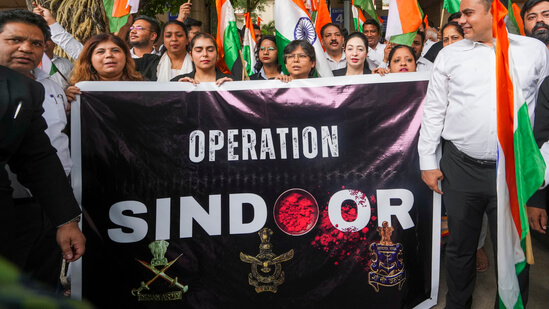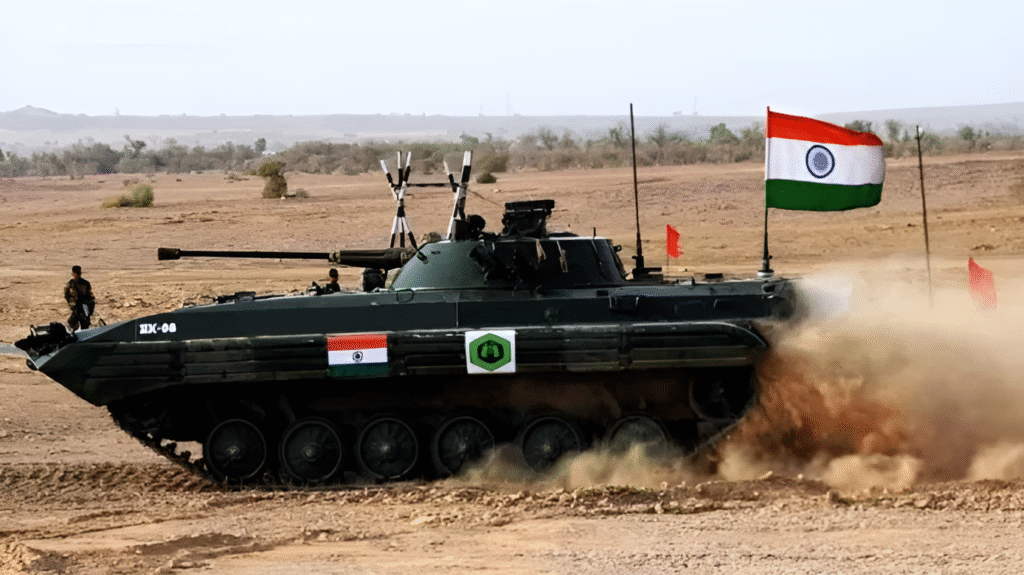In a dramatic show of force, the Indian Army executed Operation Sindoor, a precise and powerful military operation targeting terror infrastructure near the Line of Control (LoC) with Pakistan. But this wasn’t just another cross-border skirmish—it was a strategic, tech-powered response that’s turning heads across defense circles.

Tanks at the LoC? That’s a First
For the first time in recent memory, India deployed T-72 tanks and BMP-2 infantry fighting vehicles right up to the LoC. Rather than crossing into enemy territory, these assets delivered calculated firepower from within Indian borders—destroying Pakistani army bunkers and terror launch pads in one go.
The operation sends a clear signal: India isn’t just reacting anymore. It’s operating with preemptive precision and technological confidence.

High-Tech Warfare, No Line Crossed
According to senior defense officials, no troops or vehicles crossed the LoC during Operation Sindoor. Instead, India relied on long-range anti-tank guided missiles (ATGMs) and real-time drone surveillance to identify and strike targets with accuracy.
Every move was measured, calculated, and well within international norms—a move that projects power without diplomatic backlash.
Smart Tactics, Smarter Tools
Here’s what made Operation Sindoor stand out:
- AI-Powered Targeting: Satellite and drone imagery was analyzed using machine learning tools to pinpoint threats.
- Nighttime Execution: The strikes were carried out under the cover of darkness, catching adversaries off guard.
- Armored Infantry Support: Troops moved in BMP-2 vehicles, providing both speed and protection in rough terrain.
This wasn’t just firepower—it was modern warfare, Indian-style.
What Message Was Sent?
The real goal wasn’t just neutralizing terror cells. It was deterrence.
By targeting not just militants, but also military positions aiding them, India has drawn a new line:
“Terror will be dealt with at the source—and so will the support systems behind it.”
This marks a shift from reactive defense to active containment.
Diplomatic Calm, Tactical Thunder
Interestingly, while India maintains diplomatic composure at the global level, its ground forces are now embracing a “defensive-offensive” strategy—one that prioritizes national security without breaching global protocols.
Conclusion: A New Playbook in South Asia
Operation Sindoor wasn’t just a military maneuver. It was a message—about India’s growing technological edge, its evolved rules of engagement, and its readiness to act decisively when national security is threatened.
🔍 Did You Know?
The T-72 tanks used in this operation were specially upgraded for high-altitude warfare, with improved engine cooling and advanced fire control systems.



